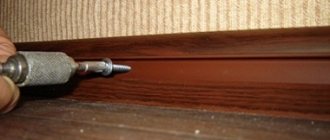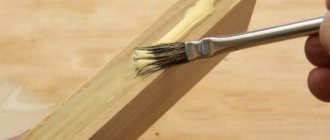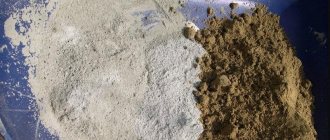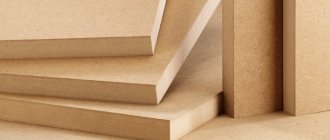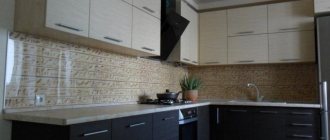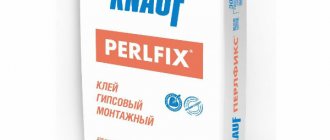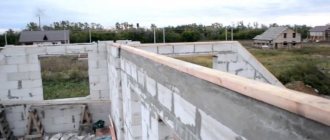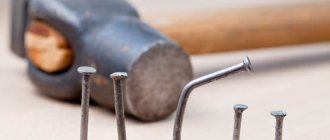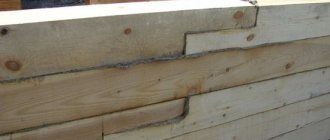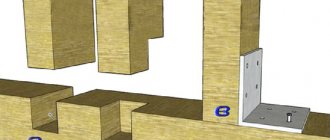Adhesive compositions
Adhesive for PVC panels - selection rules and installation instructions
15.03.2017
12.4 thousand
8.3 thousand
6 min.
Glue for PVC panels is far from the only possible way of installing polyvinyl chloride materials to various surfaces. However, it is precisely this option for installing cladding that is most popular today due to its effectiveness.
Advantages and disadvantages of plastic panels
Compared to tiles and other materials, plastic (with the exception of PVC) has a number of advantages. Here are the main ones:
- reasonable price;
- moisture resistance;
- the ability to withstand elevated temperatures, the negative effects of household chemicals, food acids, fats;
- resistance to mold growth (if installation was carried out correctly);
- light weight of the material;
- tight fit to the wall;
- possibility of installation by yourself;
- Possibility of adjusting height and length.
Due to the low price and cost of work in comparison with tiles, which should be installed only if you have experience, a plastic apron can be changed more often - this will not cause a “hole” in the budget. When replacing the apron, you don't even have to move the furniture.
The material also has disadvantages. You should not glue it next to a gas stove - any type of plastic will deform over time, even the most fire-resistant, because exposure to heat will be frequent and prolonged. Plastic should not be scrubbed with hard brushes.
Polycarbonate will not withstand intensive processing either - small scratches will still appear. Only some types of design will smooth out this drawback: if the surface is decorated with relief images, made to look like aged stone or brick, minor flaws will be invisible.
The importance of sealing joints
The vapor barrier film is laid on the inside of the room, under the thermal insulation. Its task is to protect thermal insulation from moisture from residential premises. The film itself does an excellent job, but fumes can penetrate through the joints of the canvases. To do this, each joint is insulated with special tape.
If you do not seal the joints, moisture will penetrate into the insulation, causing it to begin to lose its insulating properties. Wet mineral wool protects against cold by 60% worse than dry mineral wool.
In addition, when gluing the vapor barrier in the house itself, comfortable humidity and microclimate are maintained. This happens because the insulation absorbs vapors from the air, making it drier. Due to lack of water, problems with the health of the skin and respiratory tract can begin.
A popular bookmaker has released an application, officially you can click on the link without registration and absolutely free.
It is necessary to glue the joints of the vapor barrier layer during new construction of a house or major roof repairs. It is also recommended to check the quality of the roofing pie when buying a house, be it an old or modern building. The adhesive tape may come off over time due to age or due to poor quality installation work. In such a situation, you have to undertake repairs and it is important to choose the right type of adhesive tape and manufacturer.
Description of PVC panels
The abbreviation PVC stands for polyvinyl chloride. In fact, it is ordinary plastic, which was given the desired shape during production. PVC panels have been used as a finishing material for many years. This became possible thanks to the undoubted advantages that the panels have. Among them are:
- Durability, service life up to 10 years.
- Easy to care for.
- Environmentally friendly.
- Moisture resistance.
- Fire safety.
- Resistance to low and high temperatures.
- Good sound insulation.
- Can be attached to different surfaces and the like.
Many customers also like the fact that the stores offer a huge number of colors, with a variety of designs printed on the panels. If you want to make an inexpensive but beautiful renovation, then this material will be a good choice. The main thing is to choose a good manufacturer and pay attention to possible defects in the product. The panels are easy to buy and, importantly, easy to install.
There are two main ways in which you can attach plastic panels to the wall:
- Attaching panels to the frame. This can be done mechanically, that is, using screws, nails or staples. The sheathing itself can be metal, wood or plastic. The panels can also be glued to the frame, which in this case will act as a wall leveler. This method of fastening - to the sheathing - has its pros and cons. Those who don't want to spend too much time installing the frame and lose precious square centimeters in the bathroom can choose a different route.
- Gluing to the wall. This method has virtually no effect on the area of the room being repaired. But it has its limitations. The walls must be smooth, dry, and the adhesive composition must be well selected, then the repair work will give the right result.
You must understand that not every glue is suitable for attaching this finishing material. Some compounds may damage the plastic or do not withstand moisture well. Therefore, it is better to know in advance than to glue PVC panels to the wall.
Glue for PVC panels - how to glue plastic panels to the wall
Before starting repairs, many people wonder how to glue plastic panels to the wall and what product to use. It is traditionally believed that it is best to mount panels only on a pre-created frame, which will allow the walls to be leveled and the decorative coating to be more firmly secured. However, this method has a number of disadvantages, including its high cost and reduction of space in the apartment. Today, the more commonly practiced method is gluing panels directly to the wall.
Recommendations for adhesive fastening
Gluing the panels is quite simple if you follow some recommendations and choose the right products. The glue that is applied using a special heat gun is suitable; for example, so-called “liquid nails” interact well with PVC surfaces. The decorative coating is also perfectly attached using Moment-Montazh or Titan adhesives. In addition, polyurethane sealant has excellent adhesive properties and does not expand during use.
When choosing an adhesive, you should consider the following qualities:
- After drying it should become transparent.
- The quality of surface bonding must be high.
- The glue must be resistant to cold, humidity, alkalis, temperature changes and exposure to sunlight.
- It must have the property of durability.
- It should set in a short time.
- It must be environmentally friendly.
- The glue should not have a strong unpleasant odor; Formulations with increased toxicity should be avoided.
Products of the company Kleiberit
Among the good proven products we can highlight “Kleiberit 636”, it is safe for health, resistant to moisture, applied on one side, dries quickly. “Moment Crystal” is also perfect for decorative coating. It perfectly withstands low temperatures, moisture, has the property of transparency and quickly glues surfaces.
Procedure for gluing panels:
- Clean the walls of old wallpaper and paint.
- Level the surface.
- Degrease the entire surface of the wall to which the panels will be attached.
- Degrease the inside of the PVC product.
To attach the PVC panel to the wall, glue is applied pointwise
There are products that are not recommended to be used; It’s better to do a test first and see how the glue behaves. In particular, you should not use “Moment”, which can lead to swelling of the surface or delamination of the panel.
Today you can find on sale a special glue designed specifically for plastic panels; it is best to use it. It is quite economical in cost and consumption. The glue is not applied to the entire surface of the panel, but only at 5 points - in the center and in the corners. This will be enough to keep the panel firmly on the wall.
We recommend: How to choose the right adhesive for gypsum tiles - let's look at it in detail
Using "liquid nails"
When attaching plastic panels, the “liquid nails” product proved to be excellent. However, when using this glue, it is worth considering that such “nails” are different, some may be too strong a fixation for thin decorative panels, which leads to swelling of the surfaces, so before starting work it is better to test on a small area of the coating.
Liquid Nails 601 adhesive is used for a variety of materials when carrying out interior repair work. To correct the work, the manufacturer leaves 10 minutes from the moment of installation.
"Liquid Nails 901" are a universal product suitable for both interior and exterior work; they can glue durable, heavy structures.
Liquid nails for plastic panels
This product behaves well in changing weather conditions, withstands moisture well, and gives the user 10 minutes to correct mistakes made during gluing.
Liquid Nails 915 is perfect for a bathroom or separate shower stall. The product is used for interior work, providing a strong connection that does not allow moisture penetration.
The wall to which PVC structures will be attached should be thoroughly cleaned, leveled, pre-treated against fungus, degreased and thoroughly dried. Liquid nails are carefully applied to the wall surface in the form of a grid, the decorative coating is pressed using a rubber roller, and the seams at the joints are sealed with silicone sealant. If you don’t want to struggle with leveling the walls, you can make a sheathing from a metal profile or wooden blocks. In the latter case, they must be treated with an anti-humidity solution. Next, the panels are attached using “liquid nails.”
Liquid nails Titan
It is better to start work from the corner, placing a special bar there. If the decorative covering is installed under the ceiling, it is necessary to use a ceiling plinth and secure the first panel into its groove. Next, the decorative covering is attached from top to bottom; at the junction with the floor, you should install a floor plinth and complete the work with it. Then the whole wall will look neat. If errors are detected, the panel should be replaced immediately, without allowing the glue to dry completely.
Conclusion
So, to glue plastic panels to the wall, you should select the right adhesive, test it on a small area of plastic, and if gluing is successful without damaging the surfaces, start working. Special solutions or “liquid nails” are perfect, which should be selected in accordance with the planned work - internal, external or work in wet areas.
Source: PostroyStenu.ru
Connection technology
The main stages of gluing concrete to various materials include identical steps that must be followed to obtain a reliable fastening.
Preparatory processes
Clean the concrete surface from dust and dirt. New surfaces do not require much preparation. Dust is removed with a damp brush. Repair involves cleaning of residual adhesive mixtures. Significant differences require additional leveling with a layer of cement mortar or plaster.
When gluing concrete to a variety of materials, concrete is primed! The adhesion of the cement surface, which was initially low, increases. There are several types of soil on the construction market:
- universal;
- deep penetration;
- specialized.
It is enough to treat a new concrete slab with a universal primer. Old concrete planes require deep penetration to bind molecular groups that have lost strength. Acrylic primers are the best choice, safe and practical. Polystyrene-based primer is highly toxic and is used only industrially.
Adhesive mixtures
A large number of adhesive compositions are produced for working with various materials. Dry, liquid, intended for specific surfaces ─ the choice is difficult. Concrete planes have a porous structure; universal mixtures are the most suitable option for gluing plastics, rubber, and plywood. If the compounds will be exposed to high humidity and temperature changes, it is better to use products containing deep-impact modifiers.
Ready-made mixtures are used; adhesive compositions are prepared immediately before starting work, strictly following the instructions indicated on the packaging:
- fill the container with water;
- Gradually pour out the dry mixture, stirring evenly to avoid lumps;
- leave to settle for ten to fifteen minutes;
- Stir thoroughly again.
Using a mixer or drill, completely immerse the rotating planes, eliminating splashing of the mixture.
Bonding procedure
Depends on the type of material and purpose of the surface. Smooth plane and tight fit are a guarantee of high-quality connection and durability of use.
Requirements for glue characteristics
The difficult microclimate in the bathroom places high demands on finishing materials and means for their fastening, so PVC panels can only be glued with special compounds. High humidity, constant temperature changes and a favorable environment for the development of mold or mildew mean that conventional glue does not provide reliable fixation.
Glue
The adhesive used to attach plastic panels must have the following qualities:
- Moisture resistant. In the bathroom, the humidity exceeds permissible standards, so only moisture-resistant brands of glue can be used for gluing.
- Resistant to temperature changes.
- Tolerance to ultraviolet rays.
- High antibacterial properties. A bath with a humid and warm microclimate is an ideal environment for the development of pathogenic microflora. To prevent the spread of fungus, you can glue plastic panels using special compounds with antibacterial additives.
Please note that the quality of the glue, along with compliance with the wall preparation technology, affects the service life of wall finishing with plastic panels. Plastic can be glued with almost any adhesive, since it is lightweight, but whether it will withstand 10-15 years of use is a big question.
About PVC mosaic tiles and adhesives
- The most optimal and inexpensive glue for gluing PVC panels is Moment glue. It is reliable and strong, great for gluing plastic panels.
- Working in conjunction with a glue gun is much more pleasant. In addition, you can apply glue using the dot method, which is good for saving money. A glue gun is not that expensive, so if you are installing plastic panels in large rooms, think about it, because a glue gun will save you time and nerves.
- There are also the following means for gluing PVC: liquid nails, construction foam and cement tile adhesive. Each of these glues performs a different function, but they all have their drawbacks.
- It is not recommended to use different thermal adhesives, because plastic, when exposed to different temperatures, can expand, which will lead to the glue coming off the wall.
- There are various non-expanding sealants that are most often used by professionals, but they are much more expensive than conventional ones. You can use simple liquid nails, which are well suited for installing plastic panels.
How to attach plastic wall panels simply to a wall without a frame: options
In the case where wall panels are attached directly to a bare wall, the only option for attaching them without additional devices and damaging the wall is gluing. The choice of glue, as well as the preparation of the surface, should be taken responsibly. Depending on the quality of the materials used, as well as the thoroughness of the preparatory work, the final result will depend. Additionally, the reliability and durability of the fastening may also vary depending on these aspects.
What acts as a wall mount
In the case when PVC panels are installed without lathing, a special glue acts as a fastening to the wall. The range of glues on the modern market is represented by a variety of brands and varieties. It is recommended to refer to the ratings of individual brands and their manufacturers, choosing only the best products.
Among all the options offered for sale, it is recommended to pay special attention to glue for gluing plastic.
When choosing a glue, you should pay attention to some features:
- After drying, it should acquire transparency and form a film layer;
- the glue must be resistant to moisture, frost and any temperature changes;
- must provide long-term and reliable fixation;
- should bond surfaces for a long period and harden quickly.
It is not recommended to use hot melt adhesive to attach the panels. When temperatures fluctuate, it can expand, up to the complete separation of the fragment from the wall surface. Liquid nails and polyurethane sealant are more effective.
What materials are used for mounting on a wall?
In the case where installation is carried out directly on a bare, pre-prepared wall, the workflow will require:
- plastic PVC panels;
- specially selected glue;
- building level;
- grinder for cutting plastic panels;
- devices for marking.
In addition, do not forget about the materials that will be used for preliminary leveling, coating and degreasing the surface.
How to attach PVC wall panels
The fastening of PVC wall panels is carried out according to a certain algorithm. Mounting to a wall without battens is a simple process that anyone can do.
Before you begin installing the panels, you should first prepare the surface. To do this, the wall is initially leveled, cleaned and degreased.
The further order of work will be as follows:
- Take a separate panel and wipe it with a damp cloth from the back.
- Next, glue is applied to the same surface in a dotted manner, with a gap of a couple of decimeters between individual drops.
- After these steps, the panel is applied to the wall.
- After applying the fragment to the wall, it is pressed for a few seconds.
If liquid nails acted as fastening to the wall, then after gluing it is recommended to tap the fragment evenly and tear it off. This is due to the fact that this type of glue requires five minutes of ventilation to acquire the necessary rigidity.
Features of working with different materials
Construction and repair work involves the use of different materials: plastic, metal, rubber, drywall. Insulation of premises is carried out with polystyrene foam boards. There are certain features of working with different building materials.
Plastic panels and tiles are popular finishing materials. They cover the walls and floor with it. An adhesive connection allows for easy replacement of a deteriorated surface without dismantling the entire area. Preparation for pasting is standard. The main question is how to glue the plastic to the concrete. There are special adhesive compositions for joining plastic panels and concrete slabs. The best option is spot-on, using liquid nails. A reliable connection will be ensured by adhesive and sealant; fungicidal antifungal elements allow the composition to be used in damp rooms.
Rolled material is used for installing soft roofs and waterproofing surfaces. The first condition for installation on concrete is a dry surface of the slabs! Moisture will create a repulsive layer that negatively affects the strength of the connection; it will become impossible to glue the roofing felt to the concrete. The adhesive composition necessarily includes a bitumen component. The method of applying mastic is hot or cold. The roll is rolled out onto an evenly distributed adhesive layer, pressing the surfaces tightly with metal - tape or lath, laying the roofing felt on the concrete.
Drywall
Uneven walls with a difference of less than 2 centimeters allow you to glue drywall to concrete without lathing and preserve the usable area of the room. The prepared adhesive mixture must be applied to a sheet of drywall. After installation, the composition will fill the voids, providing a strong connection to the concrete.
Connection: metal and concrete
Reliable means that allow the metal to lie firmly on a concrete slab ─ two-component polyurethane-based adhesive and epoxy resin, known for their astringent properties. The composition is applied to prepared concrete and metal slabs. The planes are pressed tightly. Remains of the adhesive composition are removed from the metal surface immediately. After a day, the compounds can be used for their intended purpose.
Furnishing a room with metals with a galvanized surface, copper, titanium-zinc parts requires careful preparation of the metal surface. Treatment of the inner side of the surface will ensure high-quality adhesion of metals to concrete and a long service life.
Installation of penofol
A prerequisite for the strength of the installation of penofol on a concrete surface is careful preparation of the surfaces. Unevenness, chips, and other physical defects are eliminated. Glue parameters:
- resistance to high and low temperatures;
- absence of toxic components;
- resistance to sticking;
- Exterior work requires the adhesive to be resistant to steam and moisture.
A layer of glue is applied to the side free from foil, the surface is thoroughly coated, especially the edges, and left for a minute, ensuring strong adhesion. The surface is smoothed and fixed.
Installation of rubber
Requires thorough cleaning of surfaces from dirt and dust. Special rubber glue and polymer mixtures that create an additional layer that enhance the strength of the connection between concrete and rubber will help to glue rubber to concrete.
Some rules for installing a corner
If you follow certain rules for installing a plastic corner, taking into account the location of the object, you can avoid the risks of deformation, leading to an unattractive appearance.
To determine the size of the profile width, it is necessary to measure the evenness of the corner edge of the object. If the corner has a curved geometry, the optimal solution is a wide profile, and for smooth edges, a narrow product.
Particular attention should be paid to the arrangement of the corner edges of the planes of door and window openings, since this is a rather complex process that requires certain skills to form connecting lines.
Cutting the finishing material is done with a fine-toothed hacksaw. When deciding what is the best way to glue a plastic corner, you should take into account the properties of the substance. It is important that its excess is easily removed from the panel. The most suitable option would be colorless suspensions.
3
Glue installation - step-by-step instructions for everyone
We recommend: Laying laminate flooring on a concrete floor
Recently, glue has been increasingly used for the installation of plastic facing materials. This installation method is considered universal, as it makes it possible to effectively install the finish on almost any type of surface. Adhesive for plastic panels must have a number of important features that guarantee the durability and reliability of the cladding:
- resistance to temperature changes;
- resistance to ultraviolet rays;
- water resistance;
- high viscosity;
- environmental friendliness;
- no pungent odor.
If you want to cover a surface without sheathing, you must first make sure that it is sufficiently smooth and even, and that it can withstand the additional weight of the cladding being installed. If there is no confidence in the wall’s ability to withstand additional loads, it must first be strengthened. Assessing the quality of walls is the first stage of their design. If you find any defects that could negatively affect the quality of the fastening, putty the surface and eliminate all detected cracks, chips and irregularities.
The glue is applied in dotted or dotted lines
In the most difficult cases, direct installation on the wall should be abandoned and the sheathing should be installed first. Next, you should start preparing materials for installation work. Leave purchased products indoors for 12 hours before unpacking and installing on the wall. They can then be cut to create materials that are the right shape and size for installation. We degrease the materials ready for installation from the back side. To do this, you can use both acetone and alcohol, and even a soap solution.
It is necessary to glue PVC panels directly to the wall after thoroughly coating them with glue. The glue is applied to the back surface of the products in dotted or dotted lines, after which they only need to be pressed against the wall. Installation on the lathing is even simpler - glue should be applied to the surface of the panels only in those places where they will be adjacent to the installed frame. At the final stage, all that remains is to secure the framing profile and remove any resulting dirt from the panels.
Types of kitchen aprons
The kitchen apron refers to the distance between the table surface and the bottom edge of the wall cabinets. The beautiful design of the apron gives a finished look to the entire kitchen. This coating has two functions:
- protective – protects the wall from negative influences, is easy to clean, resistant to household chemicals, high temperatures, humidity;
- aesthetic – decorates the kitchen, serves as an original accent in the interior, “gathers” the style together.
The material used to make the apron can be different - polycarbonate, ABS, PVC panels. Plastic lining is now almost never used, it has outlived its usefulness, and chipboard and MDF are not suitable for this purpose.
The material is also varied in design and appearance. Some prefer plain panels, others buy an apron with imitation mosaic. Aprons with drawings, photos, artistic textures, wood or natural stone look unusual. There is material in original colors, like painted glass, stained glass, even brick. As for models with drawings, they are applied to the plastic itself by embossing or printed on a film covering the panels on top.
PVC panels
Most often you can find just such a coating on sale. The length of the panels is 2.6-2.7 meters, there are products 3 meters long. The thickness is 0.5-1 cm. PVC is the most inexpensive material for an apron, but it has many more disadvantages.
It is important to know! Plastic based on polyvinyl chloride very quickly begins to fade and scratch, so it will not look beautiful on the wall for long.
It is easy to wash the material only if there are fresh stains. It will be difficult to remove ingrained fat, because even ordinary soda will leave unsightly stripes and defects on it. It is prohibited to use aggressive chemicals on PVC for the same reason. Installation of PVC is simple, but leaving seams with gaps will lead to the growth of fungus and bacteria. Other problems that may arise when purchasing panels:
- difficult dismantling (PVC has to be glued to liquid nails, adhesives based on epoxy resin, and it is difficult to tear them off);
- poor reaction to high temperatures - the PVC plate may melt;
- low environmental friendliness - when heated, this type of plastic releases harmful substances, especially if the quality is low.
ABS
This plastic is better suited for an apron, although it costs almost the same as a mosaic tile covering. ABS is impact-resistant and is made from acrylonitrile and styrene. It is resistant to cleaning with abrasives, chemicals, and lightweight. In fact, you cannot clean the material with solvents and acetone; other products are allowed for use.
ABS plastic is harmless to humans and comes in a variety of designs and textures. The downside is fading in the light, yellowing over time, or an initially yellowish tone.
Polycarbonate
Of all the types of plastic aprons, the most durable and reliable is polycarbonate. Carbonate glass material is transparent, it is almost impossible to break, pits and scratches do not form from moderate impact. The apron will not fade or turn yellow, it is fire resistant. The disadvantages include the higher cost of the product.
Liquid Nails
Probably no repair can be done without this fastener. This product has also proven itself well in finishing work using plastic panels. Liquid nails are very easy to use, and they do an excellent job of attaching polyvinyl chloride to a wall or sheathing. But when purchasing, you need to carefully choose the right composition. Some products are too strong and their use may cause the plastic surface to swell.
Among the liquid nails that are usually used for gluing PVC finishing materials are the following:
- Liquid nails 601. They can be used when working with different types of materials, including PVC. The product dries within 10 minutes, which gives time to correct mistakes if the slab was attached unevenly. However, some craftsmen do not recommend using this composition when renovating bathrooms and toilets, since it has insufficient moisture resistance.
- Liquid nails 901. This product can be used both for interior decoration and for exterior work. Its main advantages are versatility, durability and strength. This composition is capable of holding even heavy coatings.
- Liquid nails 915. This substance is ideal for repairs in the bathroom or other rooms where there is high humidity. The composition prevents water from penetrating the wall surface, which protects the room from mold and other troubles.
In general, the use of such funds is quite justified. Perhaps there will be some subtleties when installing PVC plates. It is better to read the instructions in advance so that the polyvinyl chloride is firmly attached to the wall surface.
Features of the method
Construction waterproofing mixtures differ in their use and composition. At the same time, they are divided into several types according to the following criteria:
- By type of material: roll (film, roofing felt), powder (construction dry mixes), liquid.
- By chemical composition: polyethylene, cement, bitumen, rubber, acrylic, PVC materials, silicone (silicon).
- By method of implementation: sealing, penetrating, coating, membrane.
As you can see, there are many types of waterproofing, each of which has its own characteristics of operation outside and inside the premises.
Outside buildings
When applying waterproofing, it is very important to take into account the air temperature and the amount of sunlight on the base. The mixtures are used at temperatures from +50C to 350C. Excessive sunlight negatively affects the applied powder or liquid waterproofing, as it causes water from the solution to evaporate very quickly. As a result of the hydration reaction, the composition will not achieve the declared characteristics and will not be able to perform its functions. Therefore, the workplace must be protected from solar radiation.
Indoors
What waterproofing materials exist: varieties, how to treat moisture outside and inside
Let's take a closer look at the above types of waterproofing from the point of view of the area and method of application.
Sealing
Sealing waterproofing is not quite the right phrase.
It is correct to call products in this category sealant or joint waterproofing. It is used when it is necessary to insulate the junction of two objects, if the distance between them is up to 2 cm. An example is the junction of a wall and a sink or bathtub. For these purposes, acrylic and silicone compounds are used, most often produced in tubes with a volume of up to 300 ml. The silicone seam can be up to 5 mm, and a cavity of up to 2 cm is sealed with acrylic. Waterproofing a swimming pool or shower cabin is also an example of the use of sealants. It is recommended to use colored silicones as grout for tile joints. They protect the adhesive composition from moisture, which increases the service life of the entire wall.
Sealant is a universal waterproofing of a wall when the application area is very small. In addition, these compounds have high adhesion and are often used as adhesive for decorative panels in areas with humidity above 60%.
Thermal and waterproofing
There is the concept of thermal insulation waterproofing of walls. But this is not entirely true. Waterproofing mixtures do not contain minerals, which increase resistance to heat penetration. However, these mixtures and materials are used in insulation systems that include several layers:
- leveling (if necessary);
- waterproofing (if necessary);
- insulation (glue + insulation);
- protective (breathable);
- decorative.
Depending on the place of application, the layers may be swapped. The following are used as a waterproofing layer:
- film membranes if a ventilation façade and roof are being created;
- cement - when creating a plastered facade;
- bitumen, rubber - used in basement and roofing finishing.
Anti-corrosion
There are anti-corrosion waterproofing mixtures. Their composition is usually based on bitumen. But there is no point in using such a composition to waterproof walls, since only metals are susceptible to corrosion.
However, when the bodies of former trailers, cabins, buses or trolleybuses are used as country houses. In this case, the use of only such waterproofing will extend the life of the home and protect it from destruction.
Coating wall waterproofing
When fastening without a frame is impossible
There are a number of cases when certain restrictions are imposed due to which it is simply impossible to attach plastic panels without a frame.
Among the main such cases are:
- the wall has significant defects or unevenness;
- the old coating is not removed or is partially removed;
- the wall surface does not dry out.
Of course, this is not a complete list, since in each individual situation and room the conditions may be different.
How to properly glue a plastic corner: recommendations and advice from professionals
To ensure quality work, it would be appropriate to take some advice from construction business professionals:
- Correctly applying dimensions to the plane of the corner will eliminate the formation of gap spaces between the gluing objects. Increasing the length of the profile by up to 1 mm will eliminate the risk of marking inaccuracies and will help the panels take the correct location due to the elasticity of the product.
- Do not apply silicone adhesive into minor gaps formed during the adhesion of the connecting panels.
- When refining doorways, it is necessary to correctly determine how to glue the plastic corner, in accordance with the base of the surface.
- Installation of an arched corner is sometimes done using a hair dryer, which heats the element. It should change the geometry of the corner from a straight to a curved shape. The use of warm-up technology is limited to three attempts. Otherwise, the product is subject to deformation.
When doing finishing work with your own hands, it is not enough just to correctly follow the instructions for installing materials; it is also important to choose the right way to glue the plastic corner to the plastic panel. The modern market provides a wide selection of formulations suitable for these purposes.
Sources:
- https://obustroen.ru/stroymaterialy/otdelochnye-materialy/kleevye-sostavy/klej-dlya-pvx-panelej.html
- https://kraska.guru/klej/plitka/fartuk-na-kuxne-iz-plastika.html
- https://planken.guru/vnutrennyaya-otdelka/kley/kley-dlya-paneley-pvh-kakoy-luchshe.html
- https://derevyannie-doma.com/instruktsii/kley-dlya-paneley-pvh-raznovidnosti-kakoy-luchshe-vybrat-tehnologiya-ispol-zovaniya.html
- https://sovety-vannoy.ru/delaem-remont/steny/klej-dlya-pvx-panelej-v-vannoj.html
- https://otdelkasten.com/otdelka-sten/kak-krepit-paneli-pvh-k-stene-bez-obreshetki
- https://fb.ru/article/425425/chem-prikleit-plastikovyiy-ugolok-k-plastikovoy-paneli-vyibor-kleya-osobennosti-rabotyi-pravila-skleivaniya-sovetyi-i-rekomendatsii-spetsialistov
